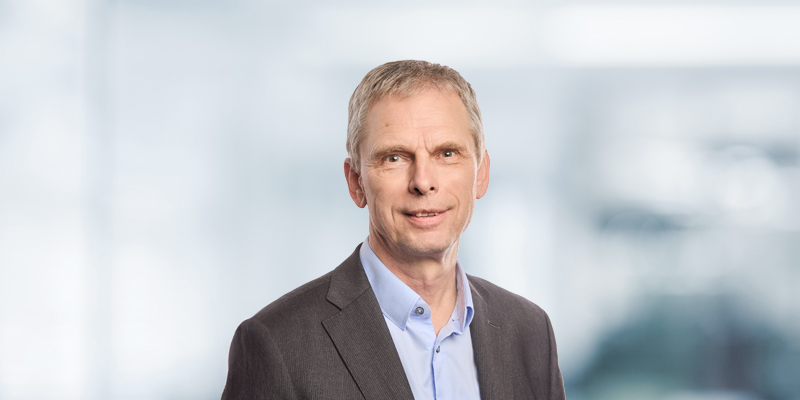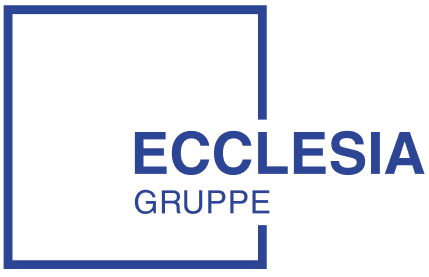
Company pension schemes as a success factor for companies
Effective pension provision via the employer
“The most effective form of this type of provision is via the employer,” explains Hubertus Mund. This view is shared by many experts. Statutory pension insurance generally only offers basic provision, which in most cases is not enough to maintain the standard of living in old age. This is why additional private or company pension provision is and remains essential.
– Hubertus Mund, Geschäftsführer von KlinikRente und Vorsorge-Experte der Ecclesia GruppeThe benefits of occupational pension schemes are a key factor in employee retention.
Attractiveness and employee motivation
Companies that offer a company pension scheme benefit on several levels. "This increases their attractiveness - both for applicants and for existing employees," emphasizes Hubertus Mund. "The benefits of a company pension scheme are a key factor in employee retention. Companies also have a social responsibility. When people retire, you also want to provide them with socially responsible protection for this phase of their lives." The social responsibility of companies contributes significantly to their positive perception by the workforce and the public.
Another aspect: occupational pension schemes also play a decisive role in motivating and attracting skilled workers and trainees. "In times of a shortage of skilled workers, many employees are specifically looking for employers who offer attractive additional benefits. This includes company pension schemes," says Hubertus Mund. "A comprehensive pension offer can make the difference as to whether a highly qualified applicant decides for or against a company." The company pension scheme also promotes long-term motivation. "People who are aware that their employer is investing in their future feel valued and are more willing to commit to the company in the long term. This not only increases satisfaction, but also employee loyalty and productivity."
Lower non-wage labor costs for taxes and social insurance
The company pension scheme is characterized by its particular effectiveness, which, according to Hubertus Mund, results from two main factors: "Firstly, the savings phase can be structured entirely from gross income. This means that non-wage labor costs in the form of tax and social insurance are eliminated during the savings phase - for both the employee and the employer.
The so-called deferred taxation is significantly more favorable because the tax rate is generally lower at retirement age. On the other hand, the effectiveness is increased by employer subsidies." These subsidies are partially or fully offset by the savings in social security contributions on occupational pension contributions. "Every euro invested in pension provision is not additionally burdened with non-wage labor costs and goes directly to the employee," emphasizes the pension expert.
– Hubertus Mund, Geschäftsführer von KlinikRente und Vorsorge-Experte der Ecclesia GruppeAs insurance brokers, we, the specialists of the Ecclesia Group, have a wealth of experience across all sectors and manage the design and selection processes. We always find and implement the best possible solutions for our clients.
Support from specialists
"It is advisable for companies to work with an experienced pension broker," advises Hubertus Mund. "We, the specialists at the Ecclesia Group, have a lot of experience as insurance brokers across all sectors and manage the design and selection processes. We always find and implement the best possible solutions for our customers."
Mixed-finance systems and one-third ownership as the ideal constellation
The development over the past decades: Employer-funded pension schemes dominated in the 1970s and 80s, but this approach became increasingly problematic due to rising costs. "In the 1990s and after the introduction of the legal entitlement to deferred compensation in 2002, the trend shifted towards pure deferred compensation," recalls Hubertus Mund. "Today, we are seeing a healthy trend towards mixed-finance systems in which both the employee and the employer pay in and government subsidies are also used." He explains an example of an effective mixed-financing model: "If half of the contribution is paid by the company and the other half by the employee, the state subsidy adds an additional third. So the employer pays one third, the employee pays one third and the state also pays one third. This is an ideal constellation."
Implementation in the company
There are several steps to consider when introducing a company pension scheme. Companies should first define clear objectives and set these out in a pension concept, which can be laid down in a pension scheme regulation, a company agreement or a collective agreement. "The pension scheme contains the entire framework conditions - such as the participation of employees and employers in the contributions, the implementation method and organizational measures for informing employees," explains Hubertus Mund. The next step is to select a suitable provider. There are numerous options here, and there are tried and tested industry solutions. Presseversorgung, MetallRente or KlinikRente are considered good choices. "The oldest industry solution is Presseversorgung, the largest is MetallRente. The second largest pension scheme is KlinikRente, which now offers occupational pension solutions not only for hospitals, but for the entire healthcare sector," continues Hubertus Mund.
Communication and digitalization
Another crucial aspect for occupational pension schemes is the development of a communication concept. "The best offer is useless if it is not used," emphasizes the expert. It is important to inform employees about the occupational pension benefits, for example through microsites or landing pages. "The impulse generator and certain processes are the basis for the target group to come to the website and obtain detailed information there." This shows the importance of digitalization. "Digital tools and platforms make it easier to effectively inform and motivate employees to engage with their pension provision," says Hubertus Mund. "For example, they can view their contributions, make adjustments and find out about their pension options at any time via a central platform. These digital solutions not only contribute to transparency, but also make it easier to integrate occupational pension schemes into everyday working life."
